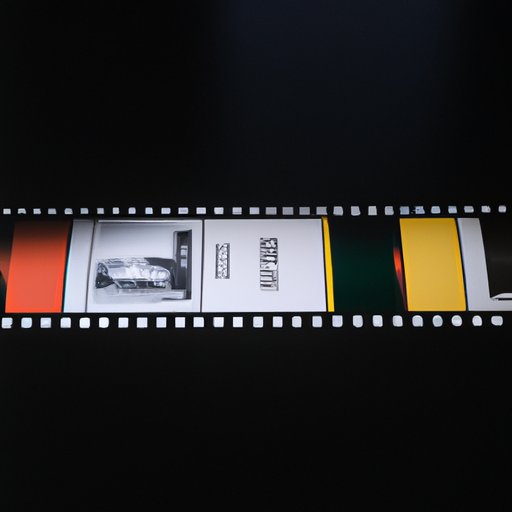Introduction: What is Analog Photography and why is it gaining popularity?
Analog photography, or film photography, is the process of capturing images using photographic film instead of digital imaging technology. This traditional form of photography has been around since the 19th century and has recently seen a resurgence in popularity as photographers seek out the unique look of analog images.
Film photography offers several advantages over digital photography, including greater control over image quality, archival longevity, and a unique look that is impossible to achieve with digital cameras. In addition, shooting with film can be a creative and rewarding experience for photographers who want to explore new ways of capturing moments.
A Beginner’s Guide to Analog Photography: Basic equipment, film types, and camera settings
The first step in getting started with analog photography is to familiarize yourself with the basic equipment and supplies needed. A film camera is the most essential piece of equipment, and there are many different types available to suit your needs and budget. You will also need to purchase film, which comes in various sizes, speeds, and formats. Finally, don’t forget to stock up on darkroom supplies such as developer, stop bath, fixer, and paper if you plan to develop and print your own photographs.
When you are ready to start shooting, it is important to understand the basics of camera settings. The most important settings are the shutter speed, aperture, and ISO. Shutter speed controls the amount of time that the camera’s shutter is open, allowing light to enter the lens and expose the film. Aperture is the size of the lens opening and controls the amount of light that enters the camera. Lastly, ISO (or ASA) is the speed of the film and determines how sensitive the film is to light.
Exploring the Art of Analog Photography: Composition, lighting, and other elements of creating beautiful images
Once you have mastered the basics of camera settings, it’s time to explore the art of analog photography. Composition is key to creating beautiful images and can make or break an image. Pay attention to the lines and shapes in the frame, and use them to create interesting compositions. Lighting is also an important element of analog photography, and can greatly affect the look of your images. Experiment with different types of lighting and pay attention to how it affects the mood of the image.
Other elements of analog photography that can help you create beautiful images include color, texture, and contrast. Color can be used to create harmony or tension in an image, while texture can add depth and interest. Contrast can be used to draw the viewer’s eye to a particular part of the image. By mastering these elements, you can create stunning analog images.
The Benefits of Shooting with Film: Unique look of analog images, control over image quality, and archival longevity
One of the biggest benefits of shooting with film is the unique look of analog images. Film images have a timeless feel that cannot be replicated with digital cameras. Film also offers greater control over image quality, as you can choose the type of film and adjust the camera settings to get the exact look you are after. Finally, film offers archival longevity, meaning your images can last for decades if stored properly.
Capturing the Moment: Understanding the Basics of Analog Photography: Exposure, shutter speed, aperture, and ISO
In order to capture the perfect moment with analog photography, it is important to understand the basics of exposure. Exposure is the amount of light that reaches the film and is determined by the shutter speed, aperture, and ISO. Shutter speed controls the amount of time that the camera’s shutter is open, allowing light to enter the lens and expose the film. Aperture is the size of the lens opening and controls the amount of light that enters the camera. Lastly, ISO (or ASA) is the speed of the film and determines how sensitive the film is to light.
By understanding these three elements of exposure, you can take control of your images and capture the perfect moment. Experimenting with different combinations of shutter speed, aperture, and ISO can help you create stunning images with film.
An Overview of the Process and Techniques of Analog Photography: Developing, printing, and scanning tips
Once you have finished shooting with your film, it’s time to move on to the next step: developing, printing, and scanning. Developing your film involves processing the exposed film in a chemical solution to produce negatives. Printing involves making contact prints from the negatives, which can then be scanned and manipulated digitally. Scanning is the process of digitizing analog images, allowing you to preserve and share them for years to come.
Developing and printing your own photos can be a rewarding experience, but it can also be challenging. There are many techniques and tips to keep in mind when developing and printing your own photographs. For example, it is important to use the right chemicals, temperatures, and times when developing film and to use the correct papers and techniques when printing.
Conclusion: Why Analog Photography is a Creative Choice for Photographers
Analog photography is a creative and rewarding choice for photographers who want to explore new ways of capturing moments. From basic equipment and techniques to tips on developing and printing, this article provides a comprehensive guide to analog photography. With its unique look, control over image quality, and archival longevity, analog photography is the perfect choice for photographers who want to create beautiful and timeless images.
(Note: Is this article not meeting your expectations? Do you have knowledge or insights to share? Unlock new opportunities and expand your reach by joining our authors team. Click Registration to join us and share your expertise with our readers.)
